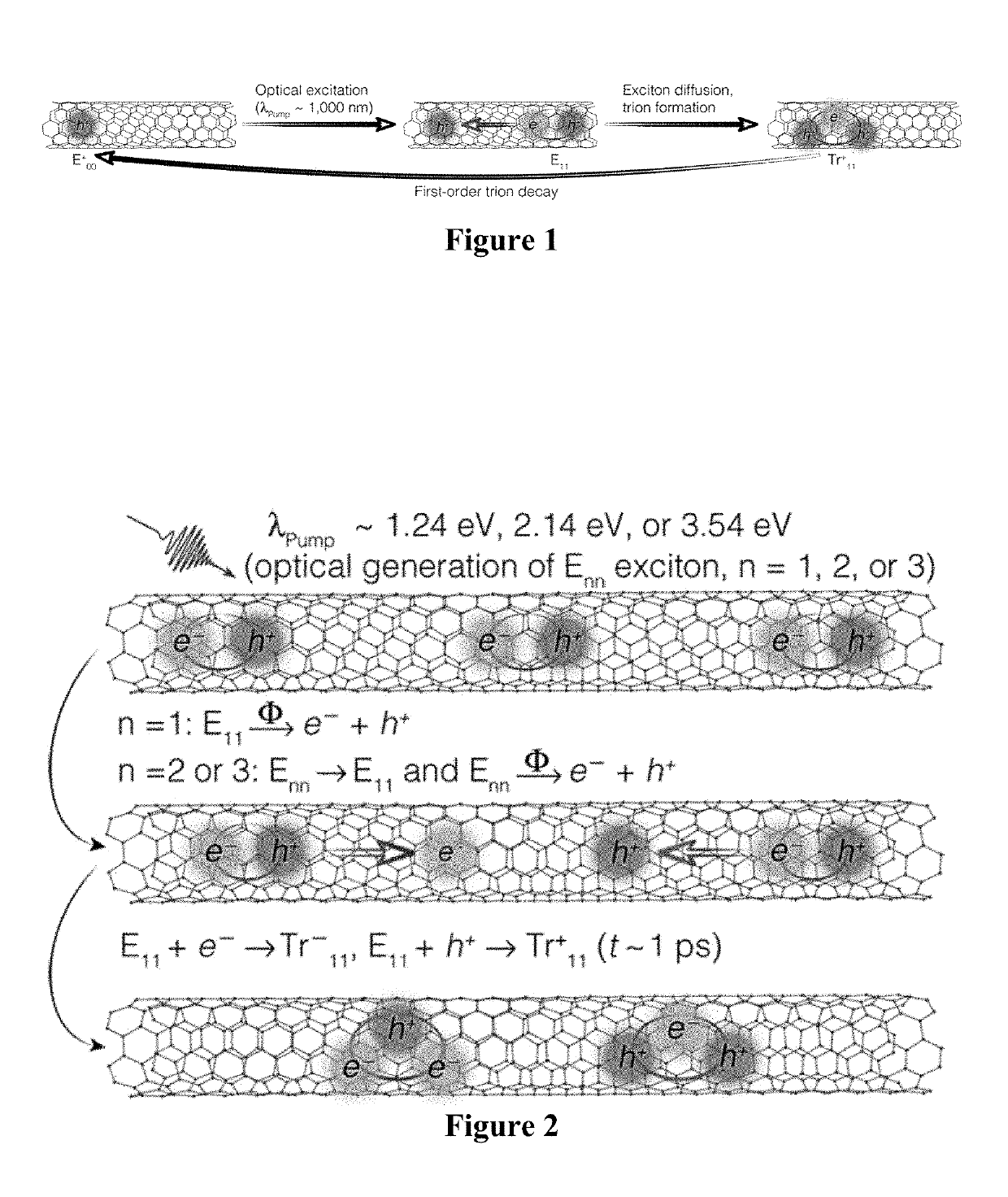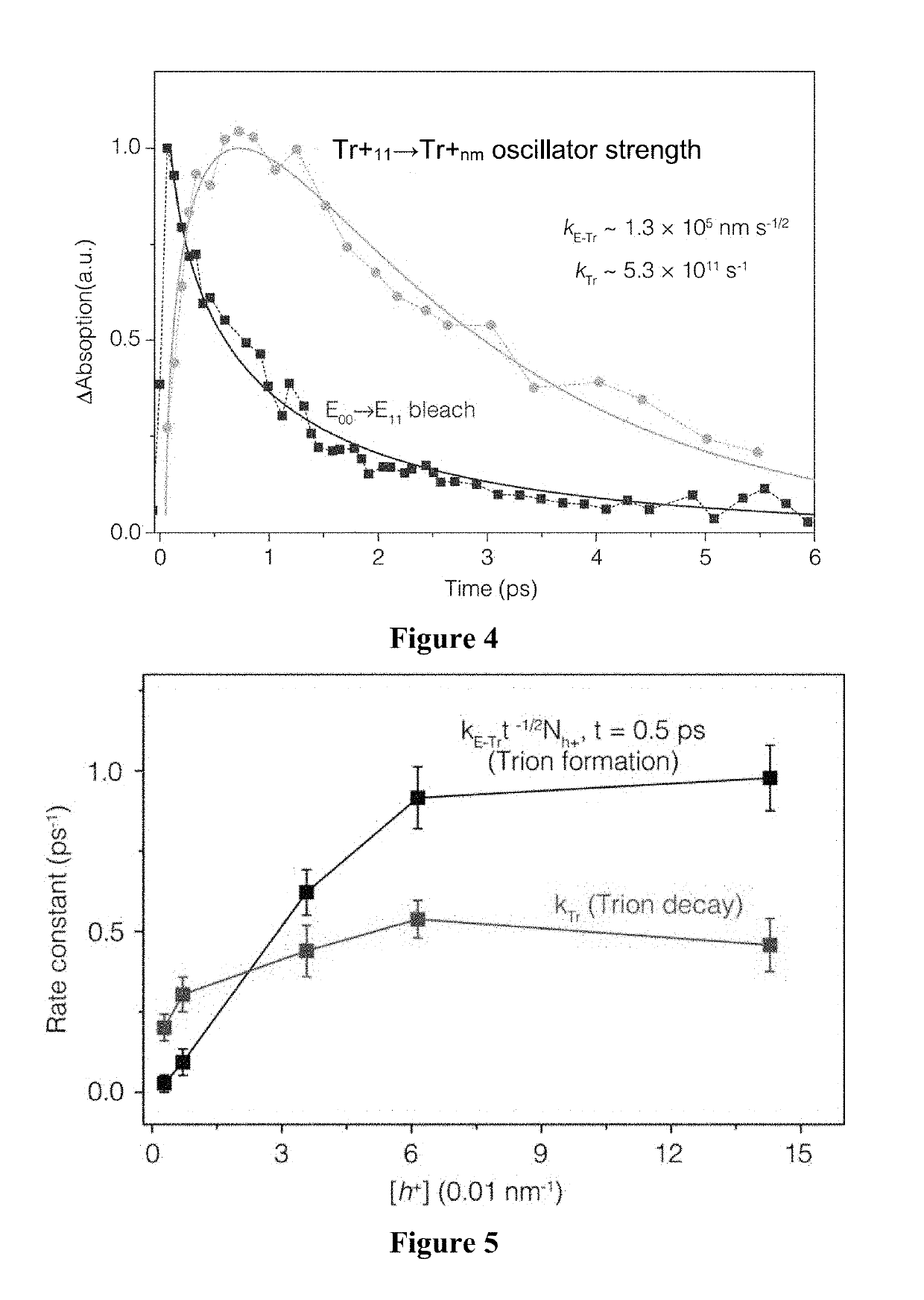Control of trion density in carbon nanotubes for electro-optical and opto-electric devices
a technology of carbon nanotubes and trion states, applied in nanoinformatics, instruments, chemistry apparatuses and processes, etc., can solve the problem that the knowledge of swnt trion states remains elusiv
- Summary
- Abstract
- Description
- Claims
- Application Information
AI Technical Summary
Benefits of technology
Problems solved by technology
Method used
Image
Examples
Embodiment Construction
[0048]Control of trion density in carbon nanotubes for electro-optical and opto-electric devices is provided. Trion-density controlled nanotube devices and the techniques and systems for designing such devices are described. An optoelectronic system can include a single walled carbon nanotube (SWNT) device. The SWNT can include a carrier-doping density with optical conditions that control trion formation that respond via optical, electrical, or magnetic stimuli. The carrier-doping density can include a hole-polaron or electron-polaron concentration.
[0049]A graphical computer-aided design environment or tool for the design, analysis, and layout of carbon nanotube-based devices can incorporate the described modeling feature for control of trion density. Such a modeling feature can include a one dimensional (1D) kinetic model of trion formation and decay dynamics. A computer program product such as in the form of one or more computer-readable storage media can be provided having instru...
PUM
 Login to View More
Login to View More Abstract
Description
Claims
Application Information
 Login to View More
Login to View More - R&D
- Intellectual Property
- Life Sciences
- Materials
- Tech Scout
- Unparalleled Data Quality
- Higher Quality Content
- 60% Fewer Hallucinations
Browse by: Latest US Patents, China's latest patents, Technical Efficacy Thesaurus, Application Domain, Technology Topic, Popular Technical Reports.
© 2025 PatSnap. All rights reserved.Legal|Privacy policy|Modern Slavery Act Transparency Statement|Sitemap|About US| Contact US: help@patsnap.com



